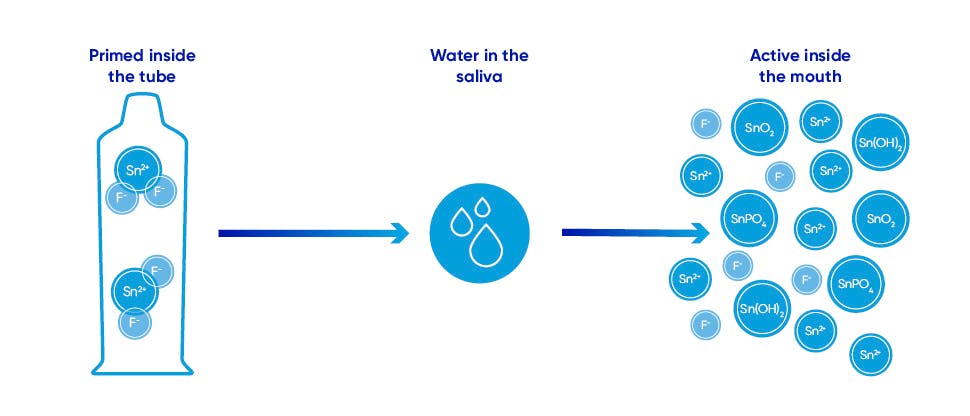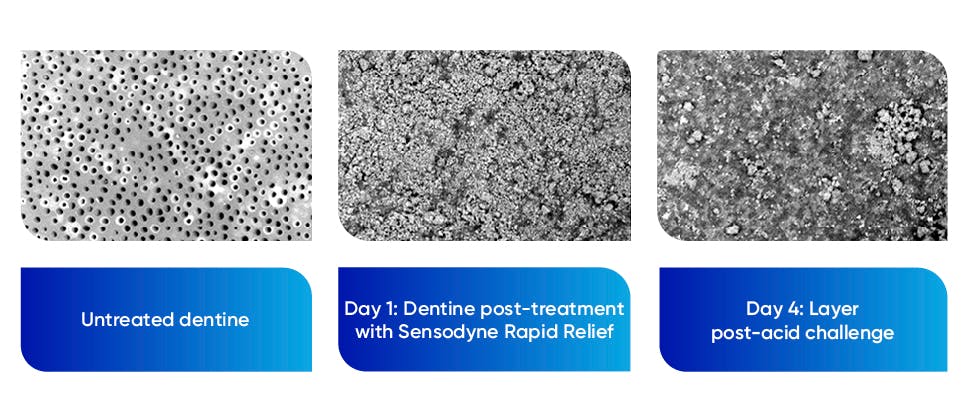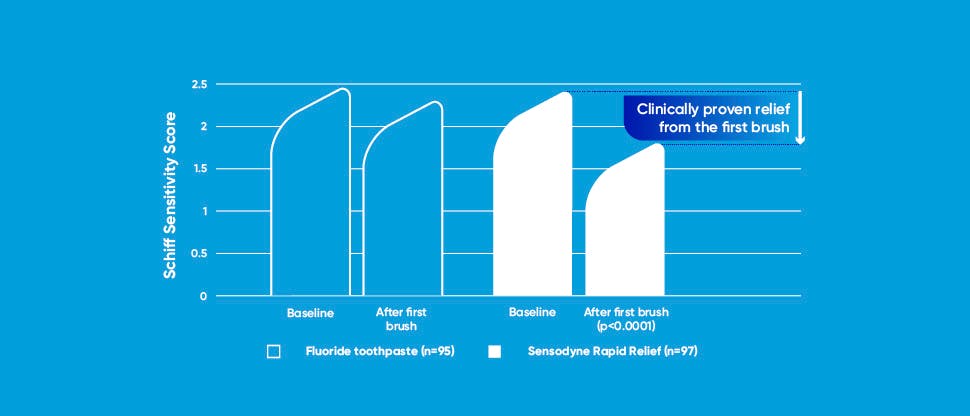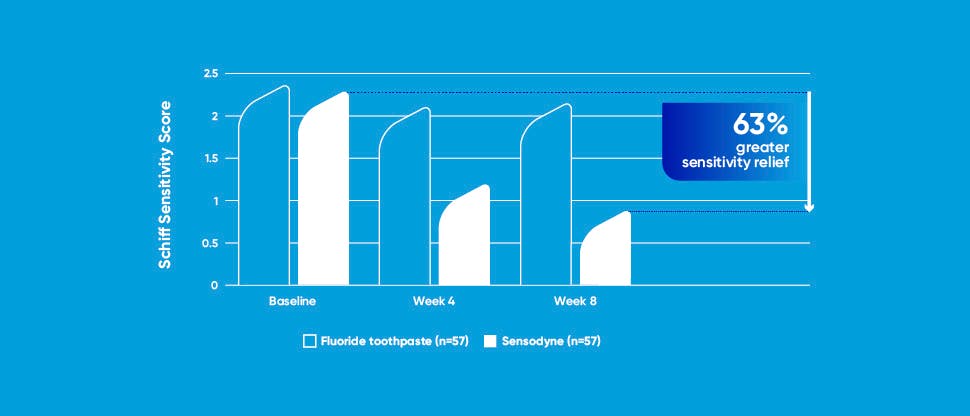Stannous fluoride formulation
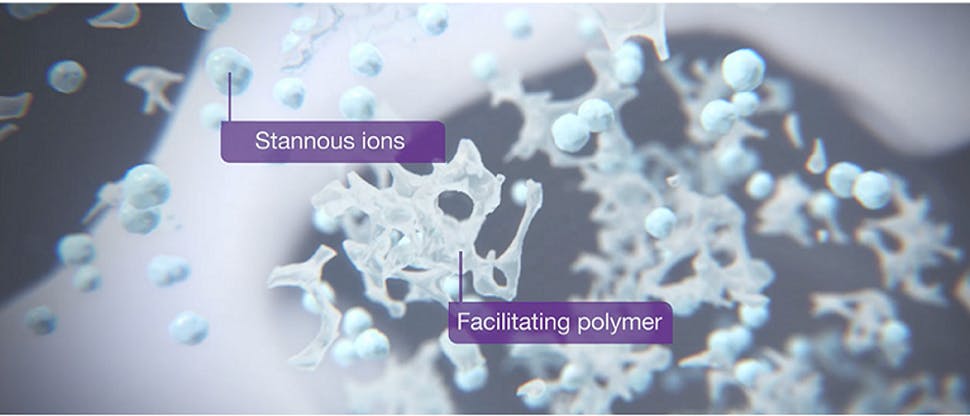
Stannous fluoride occludes exposed dentine tubules
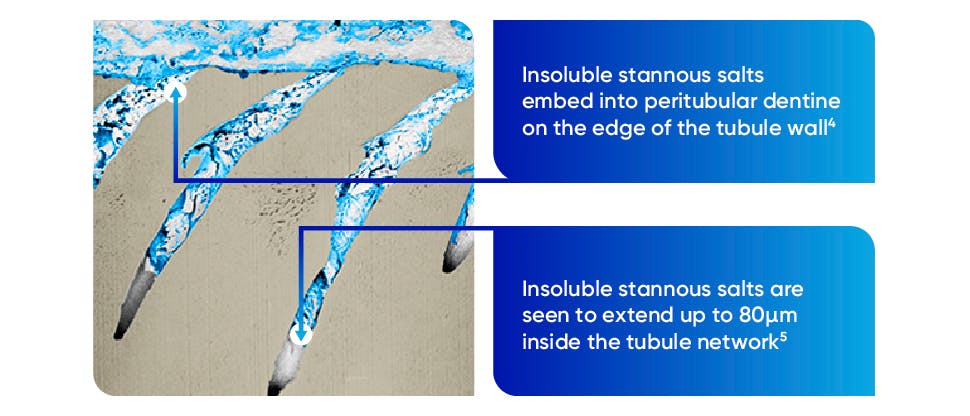
Stannous fluoride occludes exposed dentine tubules, helping prevent the movement of fluid1–5
Representative FIB-SEM image of dentine tubules treated with Sensodyne stannous fluoride formulations, combining multiple imaging techniques (STEM-EDS, DSIMS, FIB-SEM/EDS). The insoluble stannous salts are shown to extend up into the dentine tubules.4,5
DSIMS, dynamic secondary ion mass spectrometry; FIB-SEM/EDS, focused ion beam scanning electron microscope/energy-dispersive spectroscopy; STEM-EDS, scanning transmission electron microscope energy-dispersive spectroscopy
Clinically proven fast relief

Sensodyne Rapid Relief toothpaste
For patients who are looking for fast relief of dentine hypersensitivity.
*with twice daily brushing
**Expert Performance Tracking 2023
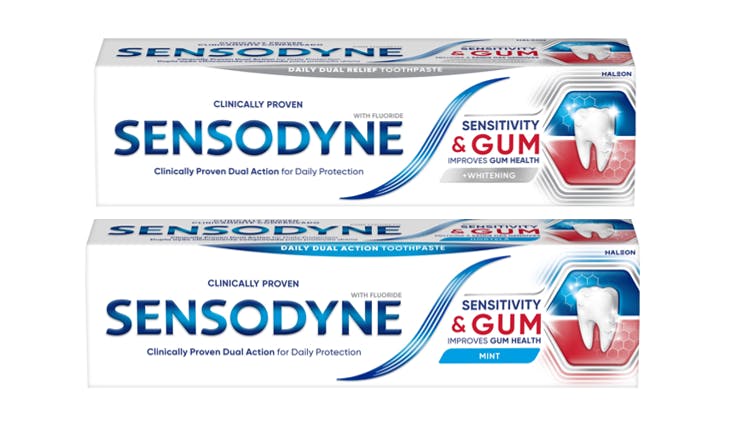
Sensodyne Sensitivity & Gum toothpaste
For patients who need clinically proven relief of sensitivity and improvement in gum health.
#1 dentist recommended brand for people with sensitive teeth*
*Expert Performance Tracking 2023

Patient psychology and dentine hypersensitivity
Find out how you could change the lives of your patients with dentine hypersensitivity from our experts today.

The Sensodyne range
Find out how the Sensodyne range can help your patients & request samples.

